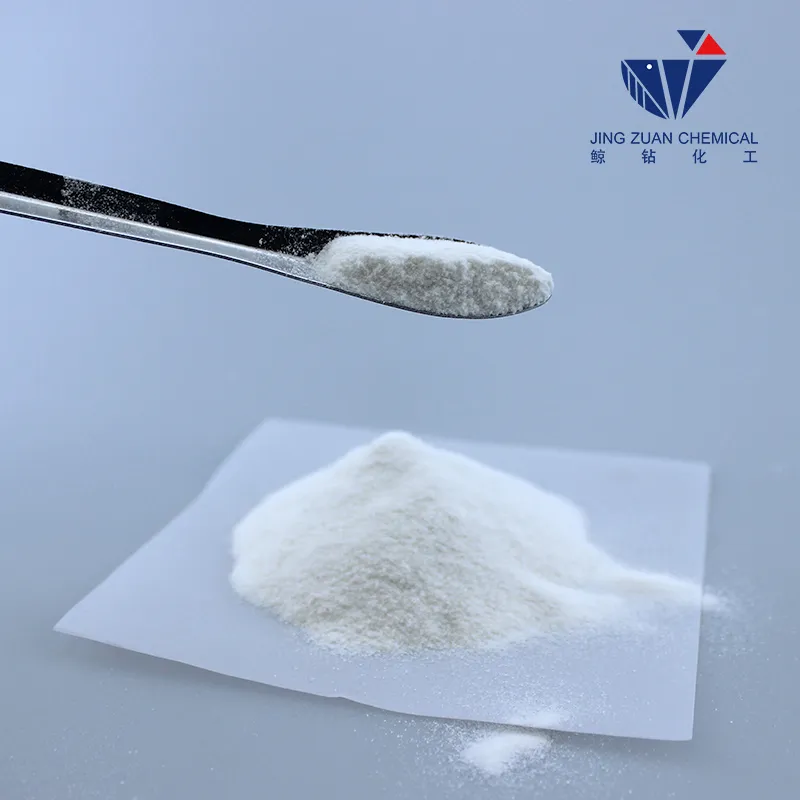
Sep . 28, 2024 18:04 Back to list
Understanding the Benefits and Applications of Redispersible Polymers in Modern Industries
Understanding Redispersible Polymer Powders
Redispersible polymer powders (RDPs) are becoming an increasingly vital aspect of modern construction materials and coatings. These fine powders are designed to be dispersed in water, allowing them to be seamlessly integrated into various formulations, including cementitious and gypsum-based systems. As the construction industry seeks to enhance the performance and durability of its materials, RDPs have emerged as essential components in improving adhesion, flexibility, and water resistance.
What Are Redispersible Polymer Powders?
Redispersible polymer powders are derived from emulsions that have been dried into a fine powder form. When mixed with water, these powders rehydrate and disperse, forming a stable polymer film that can significantly enhance the properties of construction materials. The most common types of polymers used in RDPs are vinyl acetate-ethylene (VAE), styrene-acrylic, and acrylic emulsions, each offering unique benefits based on their chemical composition.
Applications of RDPs
RDPs are widely used in various applications within the construction sector, including
1. Cement-Based Adhesives and Mortars The addition of RDPs to tile adhesives and repair mortars improves their adhesion properties and workability. This enhancement is crucial for applications in wet environments, such as swimming pools and facades, where strong bonding is necessary.
2. Self-Leveling Compounds In self-leveling underlayments, RDPs help to improve the flow and leveling characteristics. They provide flexibility, which reduces the risk of cracking and enhances durability.
3. Plasters and Renders When added to plaster and exterior render formulations, RDPs contribute to improved adhesion and flexibility, essential for withstanding the stresses involved with temperature changes and moisture variations.
4. Sealants and Coatings RDPs enhance the elasticity and cohesion of sealants and coatings, making them suitable for various applications, including waterproofing membranes and protective coatings for facades.
Benefits of Using RDPs
redispersible polymer

The inclusion of redispersible polymer powders in construction materials offers several distinct advantages
- Improved Adhesion RDPs significantly enhance the adhesion of materials to various substrates, which is essential for applications such as tile installations and external renders.
- Increased Flexibility RDPs impart flexibility to composites, allowing them to accommodate movements and prevent cracking due to thermal expansion or structural shifts.
- Water Resistance The polymer film formed when RDPs are rehydrated helps create a barrier against water infiltration, thereby increasing the durability of exterior materials.
- Enhanced Workability Incorporating RDPs makes mixing and applying construction materials easier, facilitating better handling and reducing labor time.
- Reduced Shrinkage The use of RDPs can help in minimizing shrinkage during the curing process, which is critical for maintaining the integrity of structures.
Challenges and Considerations
While RDPs offer numerous benefits, there are also challenges associated with their use. The effectiveness of RDPs can be influenced by factors such as the mixing process, compatibility with other materials, and environmental conditions during application. Additionally, the selection of the appropriate RDP type for a specific application is critical, as each polymer has unique properties that may optimally suit various environments and uses.
Conclusion
Redispersible polymer powders are revolutionizing the landscape of construction materials. Their ability to enhance the performance of adhesives, mortars, and coatings makes them indispensable in modern construction practices. As the industry moves towards more sustainable and durable building solutions, RDPs will continue to play a crucial role, offering improved adhesion, flexibility, and water resistance. Understanding their properties and applications will empower manufacturers and construction professionals to formulate materials that meet the stringent demands of today’s construction environments. As research progresses, the formulation of RDPs will likely evolve, leading to even more innovative solutions in construction.
-
Versatile Hpmc Uses in Different Industries
NewsJun.19,2025
-
Redispersible Powder's Role in Enhancing Durability of Construction Products
NewsJun.19,2025
-
Hydroxyethyl Cellulose Applications Driving Green Industrial Processes
NewsJun.19,2025
-
Exploring Different Redispersible Polymer Powder
NewsJun.19,2025
-
Choosing the Right Mortar Bonding Agent
NewsJun.19,2025
-
Applications and Significance of China Hpmc in Modern Industries
NewsJun.19,2025







